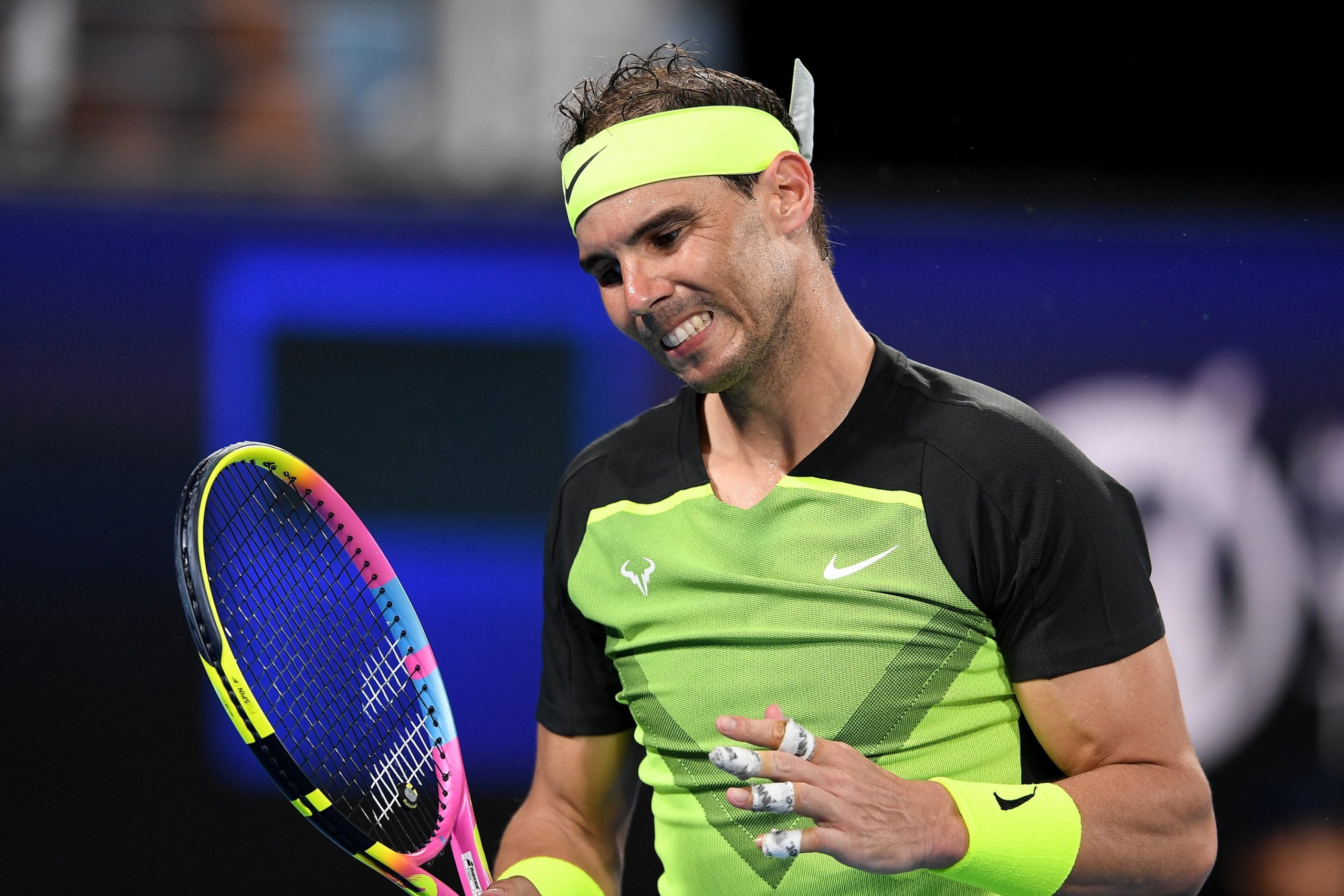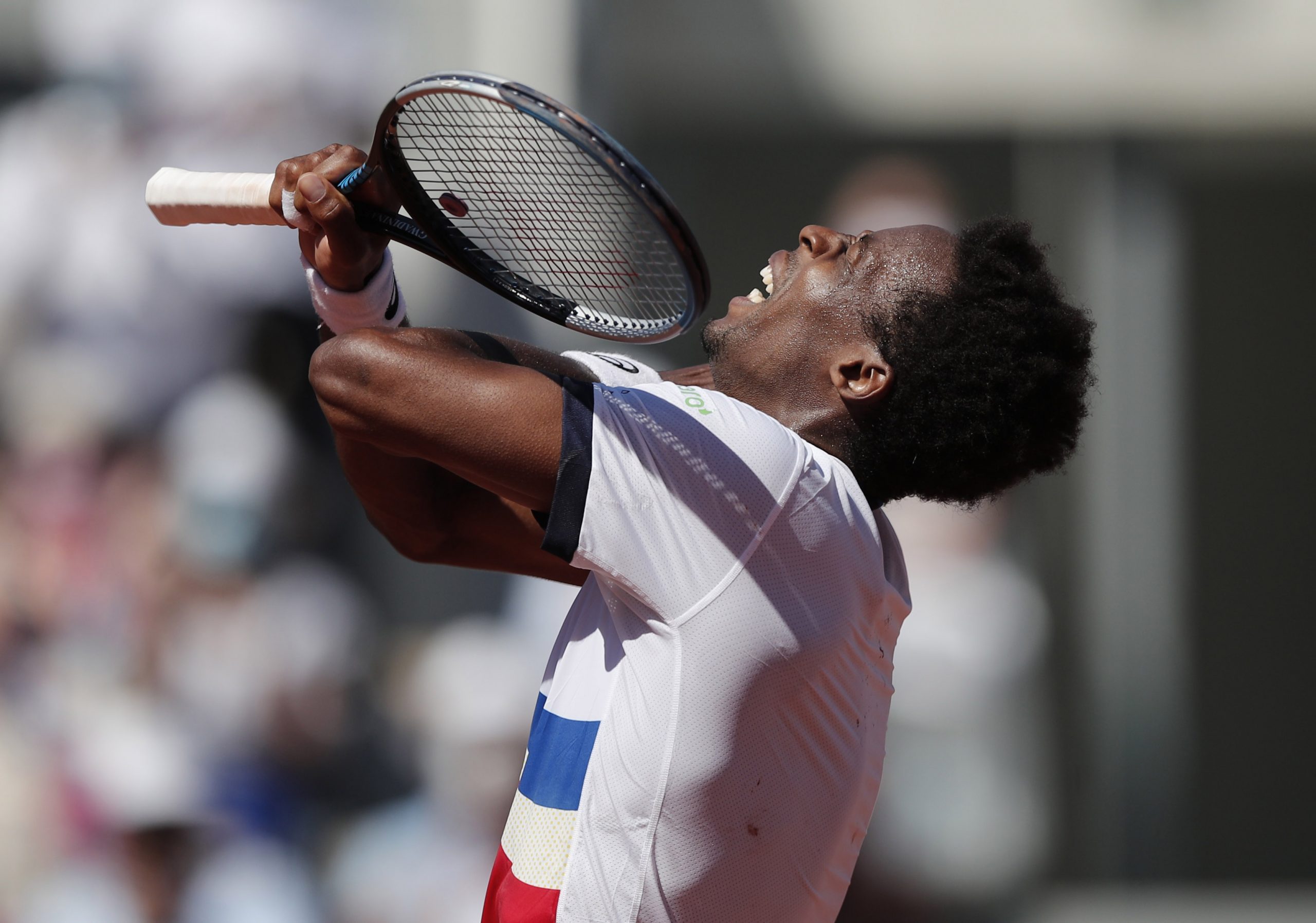Rafael Nadal is still clearly battling serve problems as he tries to defend his Australian championship whirlwind of last season.
It’s not just your imagination. Nadal’s serve metrics are well off his career numbers in his two matches so far– both losses in the season-opening United Cup.
Rafa’s struggles with abdominal strains in the second half of 2022 were well documented. It’s very possible the 22-time Grand Slam Champion is not fully healed.
Nadal chose to jam-pack his schedule late last year with appearances at the Paris Masters, the ATP Finals and a lucrative exhibition in Latin America– all despite battling this strain in his core, dealing with his usual foot problems, bidding farewell to Roger Federer and welcoming his first child. As to why he chose to push himself like this? He’s Rafael Nadal, and he likes to play tennis. He’s showing no signs of cutting his schedule.
Notably, Nadal is not typically thought of as a player who relies heavily on his serve, but that’s a mirage. Every player on the ATP Tour uses the first shot of the rally to control the point in some way. We know that because holding serve is the absolute, stone-cold standard operating procedure in professional tennis, particularly on the men’s side. Any minor erosion in that area of the game can lead to a cascade of problems.
Here’s a look at how his serve is plaguing the Spaniard.
Nadal Serve Mechanics Off
A graphic provided by the world feed during Nadal’s loss to Alex de Minaur shows the serve contact points at the United Cup so far in contrast to the 2022 Australian Open, which Rafa won in spectacular fashion.
Nadal is tossing closer to his body. This is a possible indication that his abdominal strain is preventing him from stretching to reach the tossed ball in his usual locations.
The impact? He certainly wouldn’t be able to hit a kick serve as well. However, Nadal is not really a kick-serve guy. The lefty slice is Rafa’s stock and trade. Still. Many players use slight differences in toss location to place the ball in the service box. If Rafa can’t fully reach back behind him or out beside him to hit his tossed ball, that affects his ability to hit his targets.
In particular, depth could be a problem. And if a player can’t get depth on his serve, get ready to eat returns for a very unappetizing lunch.
Nadal Serve By the Numbers
For his career, Nadal ranks in the top 20 of best servers in ATP Tour history. “Best” takes into account many variables.
On all surfaces, Nadal typically puts 68% of his first serves in play. That’s a perfect sweet spot. In his loss to Cam Norrie, Nadal only put 58% in the box, and against de Minaur only 61%. Ouch, man. In a game of small margins, that’s significant.
On first serve points won, his career standard is 72%– again excellent. Against Norrie, he was fine– at 73%. But versus Demon, he was way off at 53%. Danger, Will Robinson!
And finally, look at the Nadal’s bread & butter– second serve points won. Rafa’s career mark is a jaw-dropping 57%. Folks, Nadal is the all-time world leader in that category. If you want to know if Rafa is struggling, always look at that metric. Against Norrie, Nadal only managed 53% second serve points won. And in the Demon match? A paltry 44%.
We got problems.
Nadal Serve +1 Impacted
In addition to the effects on the serve itself, a hampered motion and edited toss would also impact Rafa’s first stroke after the serve. His plus one forehand has not been as effective because of his body position after the ball is struck on the serve.
And the lefty typically makes a living with that +1 forehand.
The good news for Nadal fans? The losses in these two United Cup matches have been close. Rafa is still functioning. And he has a little time to heal. He’s not currently slated to play until the Australian Open, which starts January 16 in Melbourne.
















